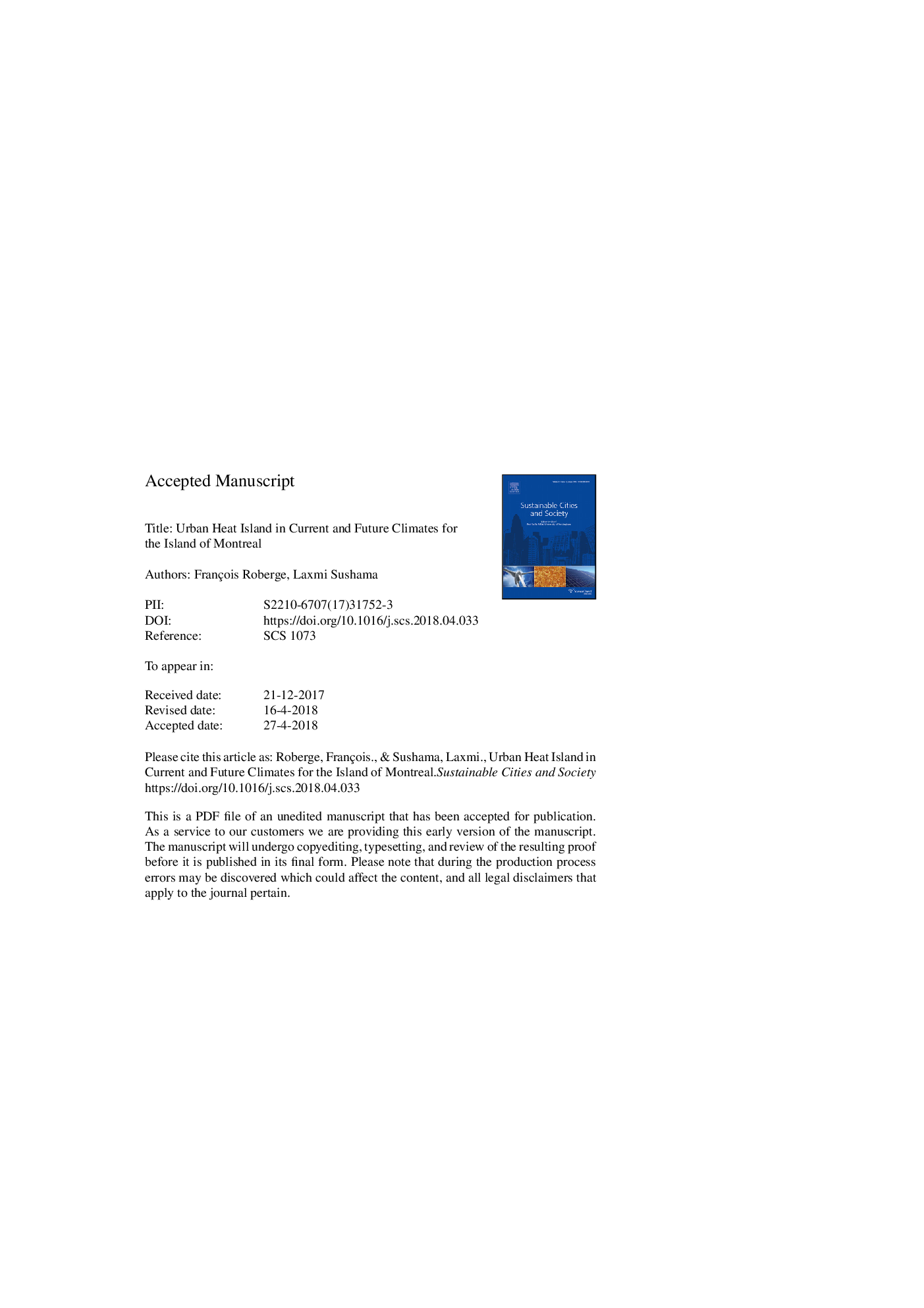| Article ID | Journal | Published Year | Pages | File Type |
|---|---|---|---|---|
| 6775260 | Sustainable Cities and Society | 2018 | 32 Pages |
Abstract
Urban regions with their distinct surface characteristics modify energy and water partitioning, leading to higher temperatures in comparison to the adjoining non-urban regions. This phenomenon, referred to as the Urban Heat Island (UHI), is studied for the island of Montreal situated in central-eastern Canada in the province of Quebec, for current and future climates, for the summer and fall seasons. Projected changes to the UHI for the region are studied using offline high-resolution (250â¯m) simulations performed with a land surface scheme, the Canadian Land Surface Scheme (CLASS), with and without the urban representation from the Town Energy Balance (TEB) model, for the RCP 8.5 scenario. Projected changes to land surface and 2â¯m air temperature fields suggest significant increases for both urban and nonurban regions, with small increases in the UHI intensity. The small increases in UHI intensity are due to the slightly higher increase in urban surface temperatures compared with nonurban regions, associated with increase and decrease in sensible and latent heat fluxes, respectively, for the urban regions. Furthermore, analysis of the projected changes to the number of hot days suggests significant increases, with urban regions augmenting the increases by 5-8â¯days in summer and 2-5â¯days in fall.
Related Topics
Physical Sciences and Engineering
Energy
Renewable Energy, Sustainability and the Environment
Authors
François Roberge, Laxmi Sushama,
